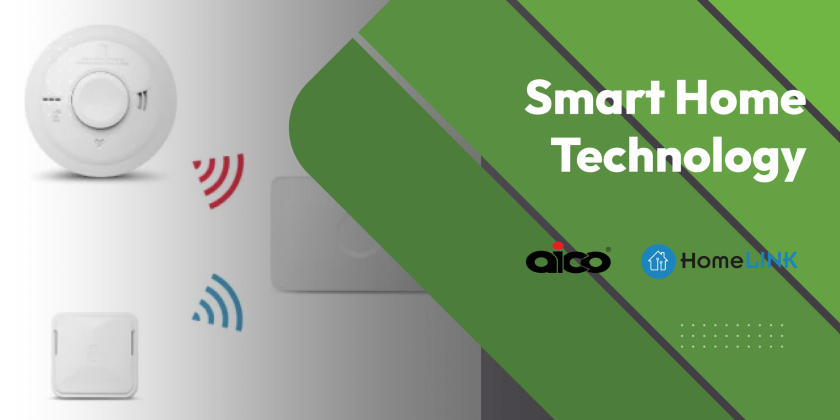Solar energy has become a buzzword in today’s green-conscious world, but what exactly is photovoltaic solar power? At its core, photovoltaic technology allows us to harness the sun’s energy and convert it into electricity using solar panels. These panels, made up of individual solar cells, capture sunlight and transform it into usable power for homes, businesses, and even vehicles. With the increasing emphasis on sustainable energy sources, understanding how photovoltaic systems work is crucial for anyone interested in reducing their carbon footprint. In this blog post, we’ll delve into the fundamentals of photovoltaic solar power, breaking down the science and practical applications behind this innovative technology.
Introduction to Photovoltaic Solar Power
Photovoltaic solar power is a cornerstone of modern renewable energy solutions. By transforming sunlight into electricity, it offers a sustainable alternative to fossil fuels. This technology is not only pivotal for reducing carbon footprints but also essential for promoting energy independence. In this section, we will explore what photovoltaic solar power entails and trace its historical development.
What is Photovoltaic Solar Power?
Photovoltaic solar power is a method of generating electricity by converting sunlight into electrical energy using semiconductor materials. Solar panels, commonly made of silicon, contain solar cells that capture sunlight and produce a flow of electricity. These systems can power anything from small gadgets to entire homes.
Photovoltaic systems are versatile. They can be installed on rooftops, integrated into building designs, or even set up on large solar farms. Their adaptability makes them suitable for various environments, from urban settings to remote areas.
The core principle of photovoltaic technology lies in the photovoltaic effect, where light photons knock electrons free from atoms, creating electricity. This process is clean, silent, and sustainable.
The growing awareness of environmental issues has driven the demand for photovoltaic solar power. As a result, it plays a significant role in the global transition towards renewable energy sources.
Brief History of Solar Technology
The journey of solar technology began in the 19th century. The photovoltaic effect was first discovered by French physicist Edmond Becquerel in 1839. However, it wasn’t until the 1950s that practical applications emerged.
In 1954, Bell Laboratories developed the first practical solar cell. Initially, this technology was used in space exploration to power satellites, highlighting its reliability in extreme conditions.
The 1970s energy crisis sparked increased interest in alternative energy sources. Governments and organisations began investing in solar research, leading to significant advancements.
By the 21st century, solar technology had become more accessible and affordable. Innovations in materials and manufacturing processes reduced costs, making solar power viable for widespread use.
Today, solar technology continues to evolve, with ongoing research focusing on increasing efficiency and integrating solar solutions into everyday life. These advancements are crucial for meeting global energy demands sustainably.
How Photovoltaic Systems Work
Understanding how photovoltaic systems work involves delving into the components and processes that enable solar panels to convert sunlight into usable energy. This section will cover the function of solar panels and the science behind the photovoltaic effect.
Understanding Solar Panels
Solar panels are composed of multiple solar cells that work together to capture sunlight. Each panel consists of layers of silicon cells, a metal frame, a glass casing, and wiring to conduct electricity.
-
Sunlight hits the solar cells, causing them to absorb photons.
-
Electrons are knocked loose from atoms within the semiconductor material, creating a flow of electric current.
-
Wiring captures and transfers this electricity for use in homes or storage in batteries.
The design of solar panels aims to maximise sunlight exposure while protecting against environmental elements. Advances in technology have improved efficiency, allowing panels to generate more power from less sunlight.
Solar panels can be installed on rooftops, ground-mounted, or even integrated into building materials. Each setup has its benefits, depending on space, location, and energy needs.
The efficiency of a solar panel depends on factors like orientation, angle, and shading. Proper installation maximises energy production, ensuring optimal performance.
The Photovoltaic Effect
The photovoltaic effect is the fundamental process that enables solar cells to convert sunlight into electricity. It occurs when light photons excite electrons in a semiconductor material, such as silicon.
Albert Einstein first explained this effect in 1905, earning him the Nobel Prize. The process involves:
-
Photons striking the solar cells, transferring energy to electrons.
-
Electrons becoming energised and breaking free from atoms.
-
Free electrons moving, creating an electric current.
This current is captured and directed through electrical circuits to power devices or charge batteries. The photovoltaic effect is clean and sustainable, producing no emissions or noise.
Innovations in materials have enhanced the efficiency of the photovoltaic effect, allowing modern solar cells to convert a higher percentage of sunlight into electricity. Research continues to focus on new materials and designs to further improve performance.
Understanding the photovoltaic effect is key to appreciating how solar technology contributes to sustainable energy solutions.
Components of a Photovoltaic System
A photovoltaic system comprises several essential components that work together to generate, convert, and store electricity. This section will discuss the role of solar cells, modules, inverters, and batteries in a complete system.
Solar Cells and Modules
Solar cells are the building blocks of solar panels. Each cell is made from semiconductor materials, usually silicon, that absorb sunlight and convert it into electricity.
Solar modules, or panels, are collections of interconnected solar cells. They are designed to capture sunlight over a larger area, increasing energy production.
-
Solar cells are connected in series within a module, allowing them to work together.
-
Modules are linked to form an array, which can power anything from small devices to entire buildings.
-
Arrays can be customised to meet specific energy needs, depending on available space and budget.
The efficiency of a solar module depends on the quality of the cells and the design of the panel. Advances in technology have led to the development of high-efficiency cells, such as monocrystalline and polycrystalline silicon.
Proper maintenance, including cleaning and inspections, ensures that solar modules perform optimally. This prolongs their lifespan and maximises energy output.
Inverters and Batteries
Inverters and batteries play crucial roles in a photovoltaic system by converting and storing the electricity generated by solar panels. Inverters transform direct current (DC) produced by solar cells into alternating current (AC), which is used by most household appliances.
-
Inverters ensure the electricity generated is compatible with the grid and home systems.
-
Types of inverters include string, micro, and hybrid, each with unique benefits.
-
Choosing the right inverter depends on the system size, budget, and specific energy needs.
Batteries store excess electricity generated during peak sunlight hours for use when sunlight is limited, such as at night or during cloudy weather. This capability enhances energy independence and reliability.
-
Lead-acid and lithium-ion are common battery types, each with its advantages in terms of cost, lifespan, and performance.
-
Proper battery management ensures longevity and safety, requiring regular monitoring and maintenance.
The integration of inverters and batteries is vital for maximising the efficiency and reliability of a solar power system.
Benefits of Photovoltaic Solar Power
The adoption of photovoltaic solar power offers numerous benefits, ranging from environmental to economic advantages. This section explores how solar energy contributes to a sustainable future and its impact on economies worldwide.
Environmental Advantages
Photovoltaic solar power is a clean, renewable energy source with significant environmental benefits. By reducing reliance on fossil fuels, it helps decrease greenhouse gas emissions and combat climate change.
-
Solar power generates electricity without producing air or water pollution.
-
No harmful emissions result from the operation of solar panels, contributing to cleaner air and healthier ecosystems.
-
Solar energy is abundant and renewable, ensuring a sustainable energy supply.
The use of photovoltaic systems helps conserve natural resources and minimise environmental degradation. By reducing the carbon footprint of homes and businesses, solar power supports global sustainability goals.
Transitioning to solar energy aligns with international commitments to reduce carbon emissions and promote green technology. As more individuals and organisations adopt solar solutions, the collective environmental impact grows.
Economic Impact
Investing in photovoltaic solar power offers economic advantages, including cost savings and job creation. The declining cost of solar technology makes it an attractive option for both residential and commercial applications.
-
Reduced electricity bills provide long-term savings for homeowners and businesses.
-
Government incentives and rebates encourage the adoption of solar power, lowering initial installation costs.
-
The solar industry creates jobs, from manufacturing and installation to sales and maintenance.
Photovoltaic systems can increase property values by enhancing energy efficiency and sustainability. Homes equipped with solar panels are often more attractive to buyers seeking reduced energy costs.
The growth of the solar industry stimulates economic development by fostering innovation and investment in renewable technologies. As the demand for solar power rises, economies benefit from increased employment and business opportunities.
Challenges and Considerations
While photovoltaic solar power offers numerous benefits, there are challenges and considerations to address. This section examines the efficiency and limitations of solar technology and the factors involved in installation and maintenance.
Efficiency and Limitations
The efficiency of photovoltaic solar power is influenced by several factors, including technology, location, and environmental conditions. Understanding these limitations is crucial in optimising system performance.
-
Solar panel efficiency varies depending on the type and quality of the cells used.
-
Geographical location affects sunlight availability, impacting energy production.
-
Weather conditions, such as cloud cover and shading, can reduce efficiency.
Despite advancements, photovoltaic systems have efficiency limits, often converting only a portion of sunlight into electricity. Research is ongoing to develop more efficient materials and designs.
Energy storage solutions, like batteries, are essential for overcoming limitations related to sunlight variability. By storing excess energy, systems can maintain a consistent power supply.
Understanding these factors helps in making informed decisions about solar power investments and setting realistic expectations for performance.
Installation and Maintenance
The installation and maintenance of photovoltaic systems require careful planning and management to ensure optimal performance and longevity. Several factors must be considered during the installation process.
-
Site assessment is crucial to determine the best location and orientation for solar panels.
-
Professional installation ensures systems are set up safely and efficiently, maximising energy production.
-
Compliance with local regulations and building codes is essential for legal and safe installation.
Regular maintenance, such as cleaning panels and checking connections, is vital to keep systems functioning effectively. Proper care extends the lifespan of solar components and ensures consistent energy output.
-
Monitoring systems help detect issues early, enabling timely repairs and adjustments.
-
Scheduled inspections by professionals ensure all components operate correctly and safely.
Addressing these considerations helps in achieving the full benefits of photovoltaic solar power while minimising potential issues.


